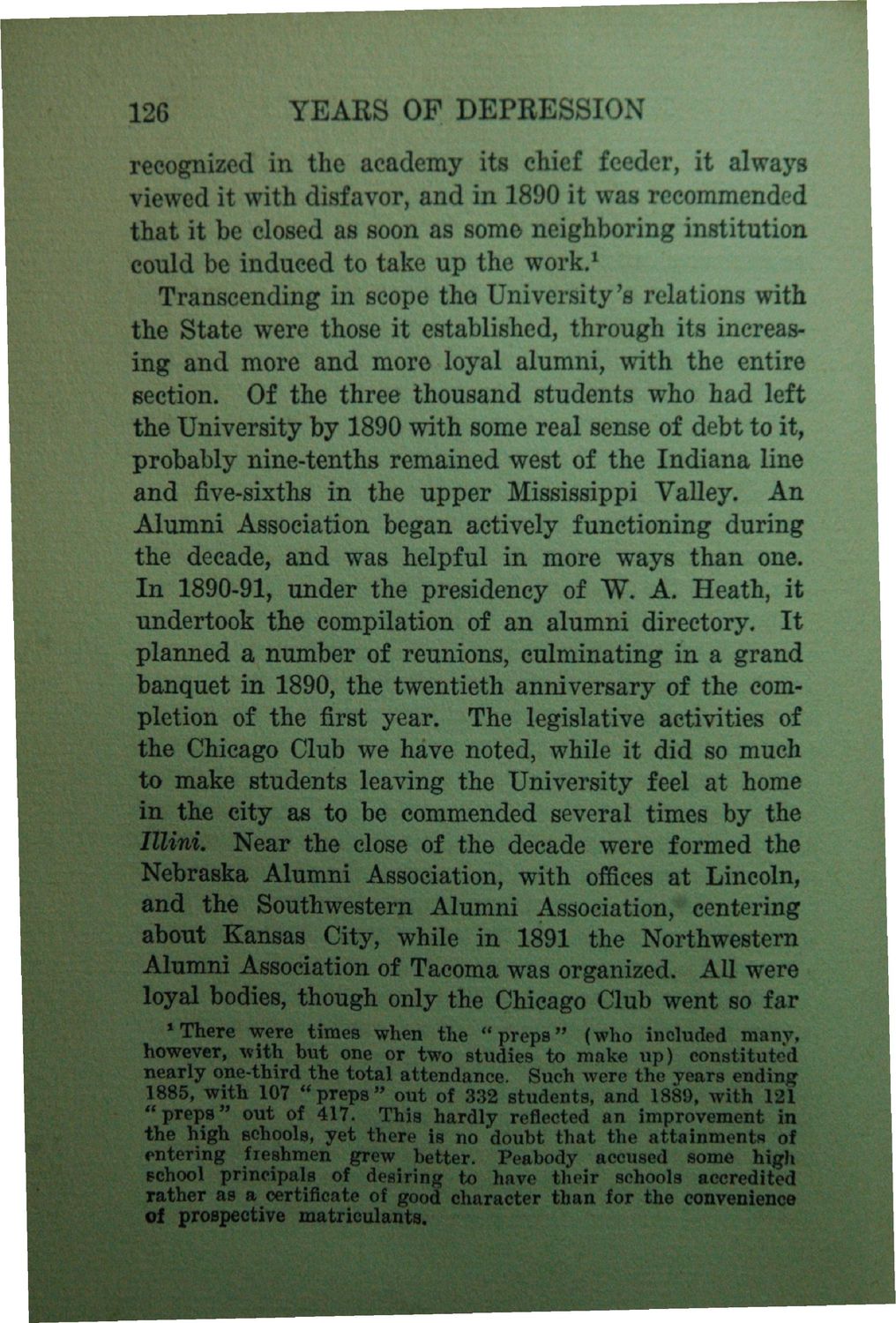| |
| |
Caption: Book - History of the University (Nevins)
This is a reduced-resolution page image for fast online browsing.

EXTRACTED TEXT FROM PAGE:
126 YEARS OF DEPRESSION recognized in the academy its chief feeder, it always viewed it with disfavor, and in 1890 it was recommended that it be closed as soon as some neighboring institution could be induced to take up the work.1 Transcending in scope the University's relations with the State were those it established, through its increasing and more and more loyal alumni, with the entire section. Of the three thousand students who had left the University by 1890 with some real sense of debt to it, probably nine-tenths remained west of the Indiana line and five-sixths in the upper Mississippi Valley. An Alumni Association began actively functioning during the decade, and was helpful in more ways than one. In 1890-91, under the presidency of W. A. Heath, it undertook the compilation of an alumni directory. It planned a number of reunions, culminating in a grand banquet in 1890, the twentieth anniversary of the completion of the first year. The legislative activities of the Chicago Club we have noted, while it did so much to make students leaving the University feel at home in the city as to be commended several times by the TLlini. Near the close of the decade were formed the Nebraska Alumni Association, with offices at Lincoln, and the Southwestern Alumni Associatio^llcentering about Kansas City, while in 1891 the Northwestern Alumni Association of Tacoma was organized. All were loyal bodies, though only the Chicago Club went so far * There were times when the "preps" (who included many, however, with but one or two studies to make up) constituted nearly one-third the total attendance. Such were the years ending 1885, with 107 "preps" out of 332 students, and 1889, with 121 "preps" out of 417. This hardly reflected an improvement in the high schools, yet there is no doubt that the attainments of entering freshmen grew better. Peabody accused some high school principals of desiring to have their schools accredited rather as 1 certificate of good character than for the convenience of prospective matriculants.
| |